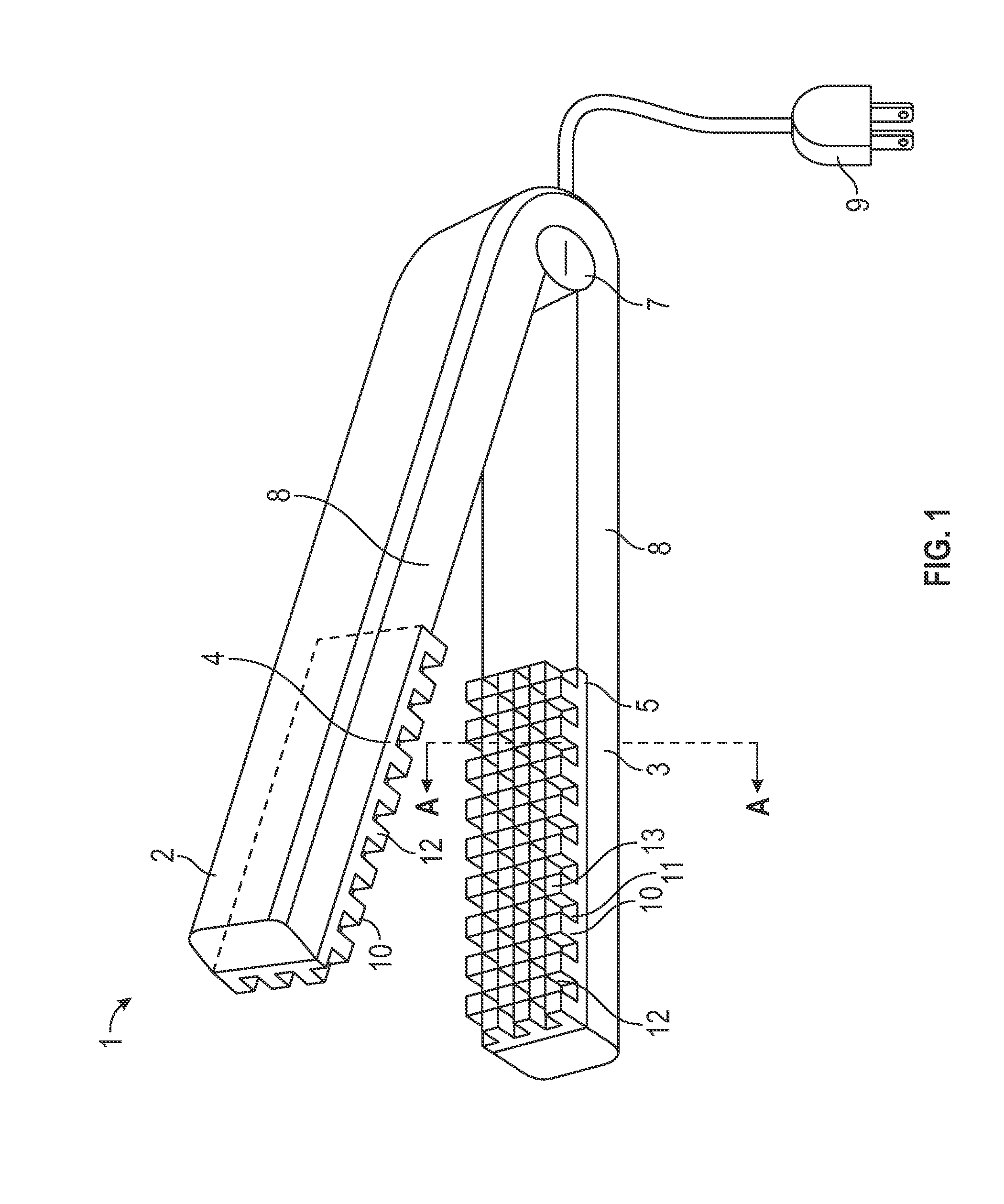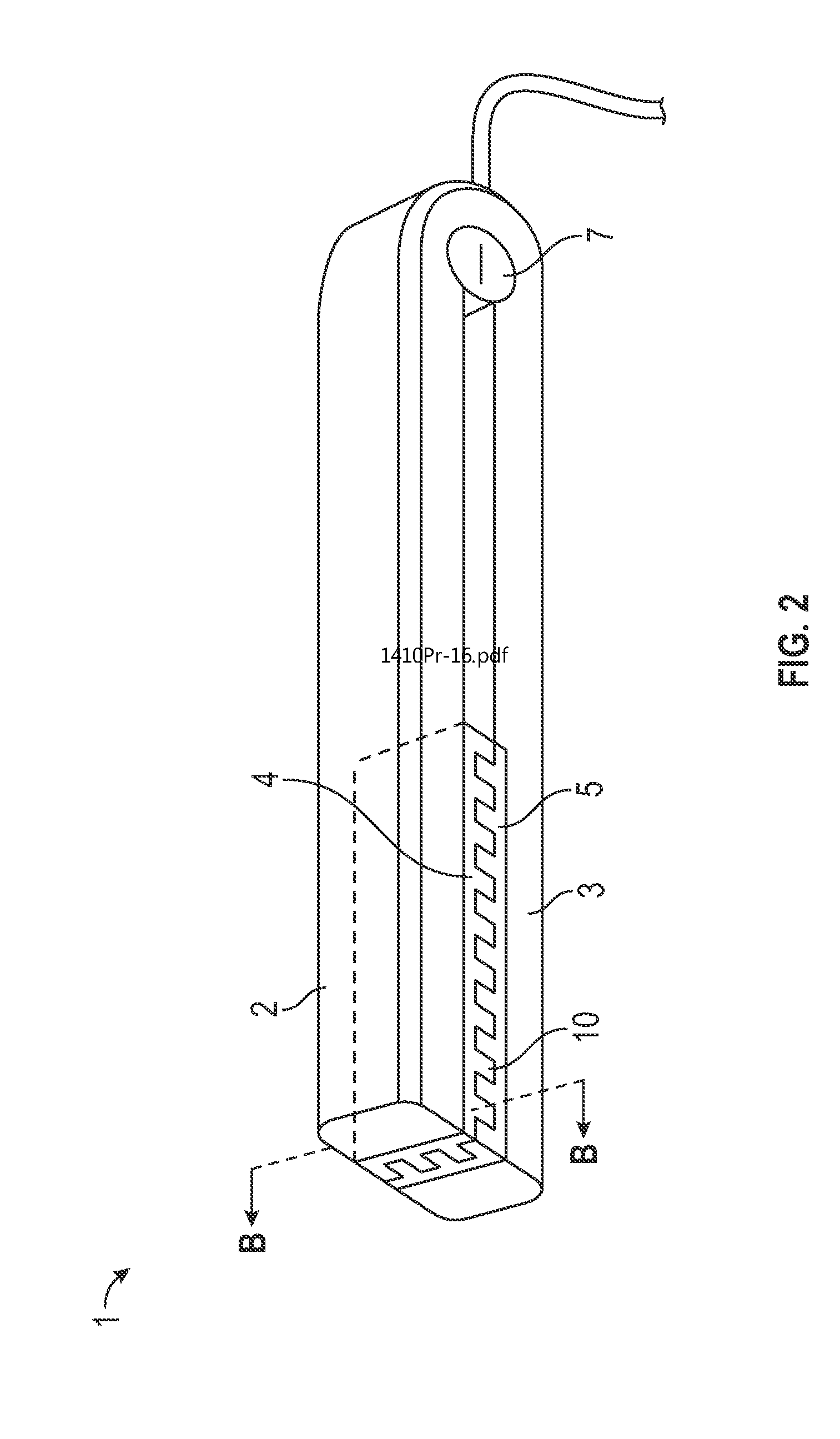Hair volumizing device that utilizes individual treatment elements without leaving a visible pattern
a hair and volumizing technology, applied in curling-tongs, curling irons, hair equipments, etc., can solve the problems of not meeting the requirements of crimping devices, not specifically designed for lifting and volumizing, and saw-tooth ridge design of crimping devices, etc., to achieve substantial lifting and holding strength, add lift or volume to any hairstyle, and minimize any discernible pattern left in the hair
- Summary
- Abstract
- Description
- Claims
- Application Information
AI Technical Summary
Benefits of technology
Problems solved by technology
Method used
Image
Examples
Embodiment Construction
[0032]A hair volumizing device is designed specifically for adding lift or volume to any hairstyle. The device comprises two arms with heated interlocking plates that employ interlocking two dimensional arrays of individual treatment elements with alternating spaces. The individual treatment element design and the two-dimensional array pattern provide substantial lift and holding strength. The individual treatment elements of the volumizing device transforms the under layer of hair of a person into a matrix that can support the outer or upper visible layer of hair to create volume. The various embodiments also minimize any discernible pattern left in the hair.
[0033]A hair treatment device is optimized for lifting and volumizing hair. The volumizing device leaves little or no visible pattern or frizz in the hair and creates significantly greater and longer lasting volume in the hair. In an embodiment, these benefits are achieved through a design that employs arrays of outwardly proje...
PUM
 Login to View More
Login to View More Abstract
Description
Claims
Application Information
 Login to View More
Login to View More - R&D
- Intellectual Property
- Life Sciences
- Materials
- Tech Scout
- Unparalleled Data Quality
- Higher Quality Content
- 60% Fewer Hallucinations
Browse by: Latest US Patents, China's latest patents, Technical Efficacy Thesaurus, Application Domain, Technology Topic, Popular Technical Reports.
© 2025 PatSnap. All rights reserved.Legal|Privacy policy|Modern Slavery Act Transparency Statement|Sitemap|About US| Contact US: help@patsnap.com



